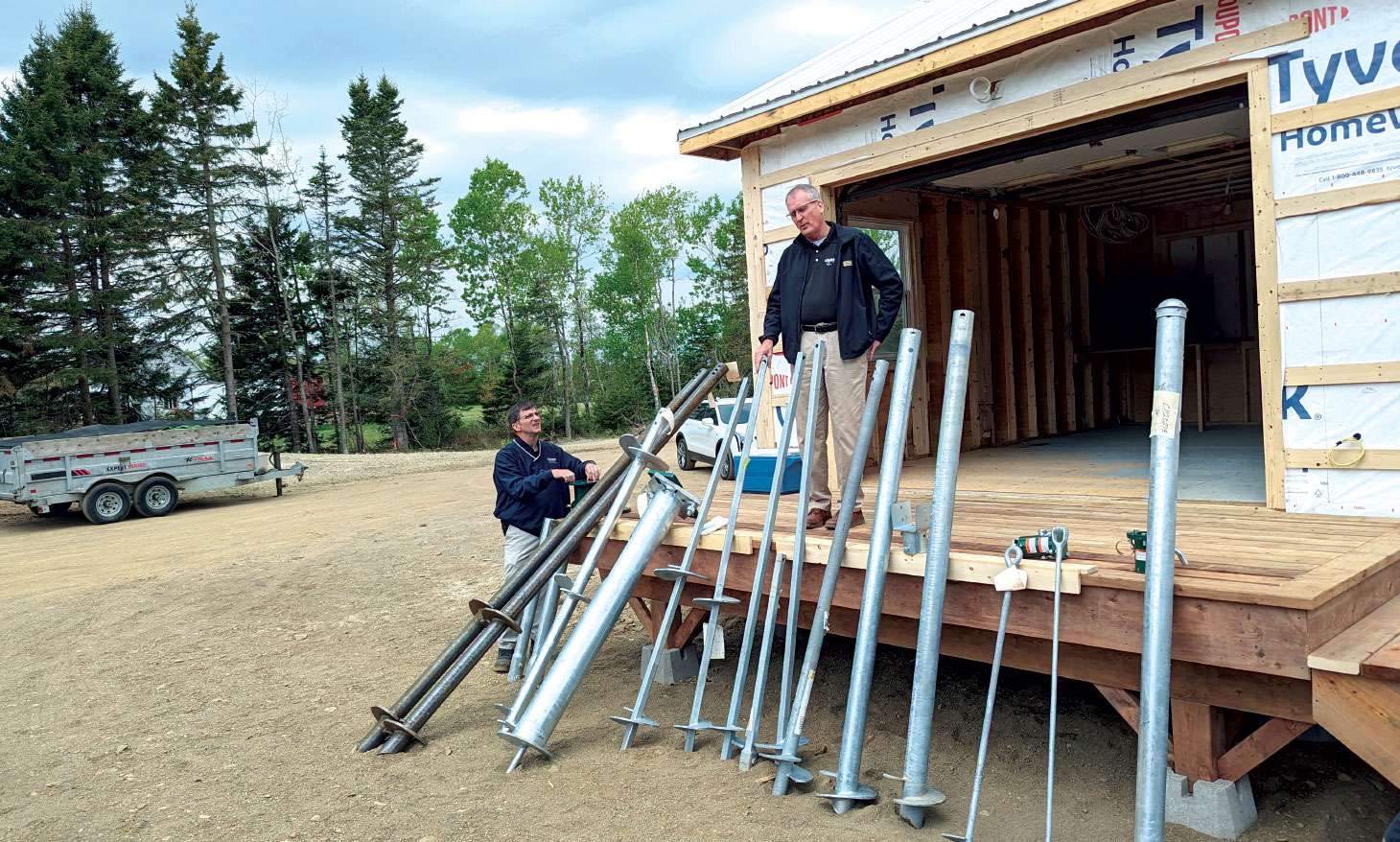
Since its founding in Centralia, Mo., in 1912, Chance Foundation Solutions has experienced significant growth. The company now boasts the largest distribution network for helical piles in North America, and its accumulated wealth of knowledge around helical pile engineering and product innovation is being passed along through Chance University.
The training program has been operating since the 1990s, helping to ensure Chance’s worldwide network of dealers, contractors and installers is up to date on the latest product improvements, installation techniques and safety practices for helical piles.
“We’ve done helical pile installations for over 100 years. We wanted to collect all that experience and knowledge in one place and provide a consistent message that this is what we have found is the best way to do the job,” said Sarah Banks, the Chance University administrator for Chance Foundation Solutions. “The university was developed to set a standard for installation, so that no matter where our products are being installed or who’s installing them, you can expect a certain level of expertise and knowledge.”
Now part of Hubbell Power Systems, Chance Foundation Solutions manufactures a comprehensive line of deep foundation products, including helical piles, resistance piers, tieback anchors, adapters, pile caps and installation tooling. For years, it has been an innovation leader in the use of helical pile technology for foundation repairs.

The company’s helical underpinning systems provide high-capacity piles and piers designed to stop settling and cracking of existing residential, commercial and industrial structures by stabilizing or increasing the load capacity of their foundations.
Foundation repair and remediation remains a primary focus of Chance University, but the curriculum is changing to reflect the growing popularity of helical piles in new building projects.
“Helical piles started as a technology for new construction. Earliest recorded uses in the 1840s show helical piles as foundations for lighthouses and piers,” said Banks. “It wasn’t until the 1980s that Chance pioneered the foundation repair industry using helical piles. More recently, engineers have been successfully using helical piles for larger projects, including multi-storey structures such as One Richmond Row.”
One Richmond Row is a 32-storey apartment tower recently constructed in London, Ont., using Chance helical piles. It’s among the tallest structures built on helical piles in North America.
Online courses and field training
According to Banks, the Chance University curriculum was developed by Chance’s engineering team, which together has more than 100 years of experience designing and installing helical piles. The program includes online course work as well as hands-on field training to provide participants with a solid foundation of knowledge and practical skills.
The online courses are:
- Fundamentals – includes information on Chance Foundations Solutions and available resources and instruction on foundation work, structures, soils and safety.
- Helical Piles for Foundation Repair – provides information on using Chance helical piles for foundation repair, including site evaluation, equipment and installation.
- Resistance Piers for Foundation Repair – covers basic design and installation of Atlas push piers (a Chance product) for foundation repairs.
- New Construction – increases understanding of how to utilize helical piles for new construction applications.
The fourth course was added just this year, in response to the need for more training on helical pile installation methods and design theory for new construction projects.
“Since we created our training program in-house and it is created by our engineers, we have the flexibility to be able to update and change as [the industry changes],” said Banks. “We’re going to continue expanding our course offerings to reflect the kinds of installations people are doing. We want to make sure students receive the latest information and also what we believe are the best recommendations for using our products.”
To that end, a fifth online course is being added to the Chance University curriculum this fall. This one is on installing helical tieback anchors often used for earth retention, both in temporary and permanent applications.
“Since we created our training program in-house and it is created by our engineers,
Sarah Banks, Chance Foundations Solutions
we have the flexibility to be able to update and change as [the industry changes].”
“The new course will cover the methodology and best practices for successfully utilizing these products. Chance square shaft anchors are an excellent choice for tieback applications, especially when coupled with the new universal adapter. This allows crews to transition from the helical tieback anchor’s square shaft to threaded bar, safely and efficiently,” said Banks.
Chance University’s field training that follows completion of online coursework is typically a one-day session held at a local distributor of Chance products or at a construction jobsite. Banks says the training enables participants to see the knowledge they’ve gained being put into practice, and it’s also an excellent opportunity to ask questions and share what they’ve learned with others.
Those who complete Chance University’s two-part program are recognized as Certified Installers of Chance helical pile and/or Atlas resistance products and can offer their customers a 30-year transferable warranty on their work.
“Only our Certified Installers can offer a product warranty on Chance or Atlas products,” said Banks. “We are confident that the Chance University program will ensure the best success for each project so we will stand behind the products that those installers put in the ground.”

She adds while the main audience for Chance University is contractors and installers, it is also widely used by others, such as engineers and dealers in Chance’s distribution network.
An example of that is Ehsan Livani, a project manager with Atlantic Builders Limited. The construction firm in Saint George, N.B., is one of four Canadian distributors of Chance products (the others are in London, Ont., Kelowna, B.C. and Richmond, B.C.).
In May, Livani, along with three others who have completed their Chance University coursework, participated in a field training session staged at the Atlantic Builders shop in Pennfield, N.B. Livani says an important reason why he completed the training was so he could support and pass along his knowledge to other installers working with Chance helical pile products in Eastern Canada.
“I wanted to know the products and I wanted to know the installation process. We have some installers in Atlantic Canada and Quebec, and we want to support them,” he said.